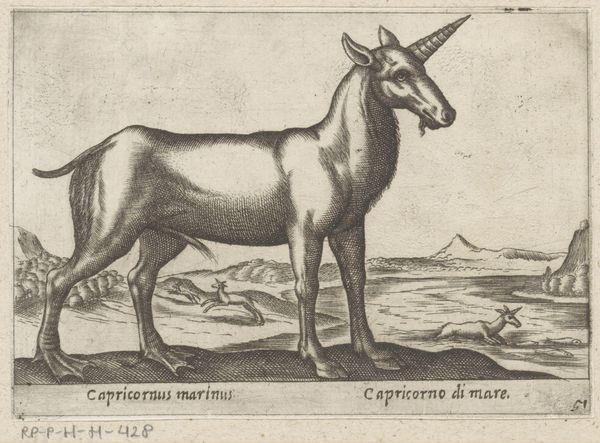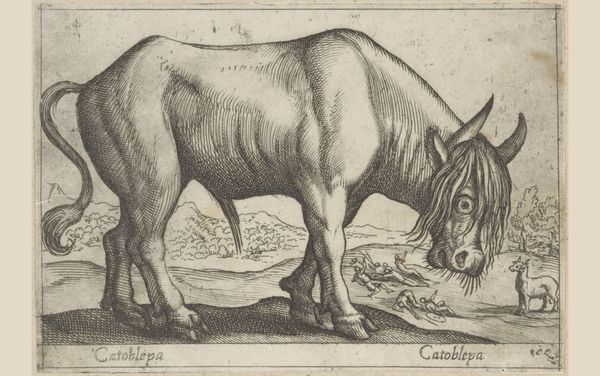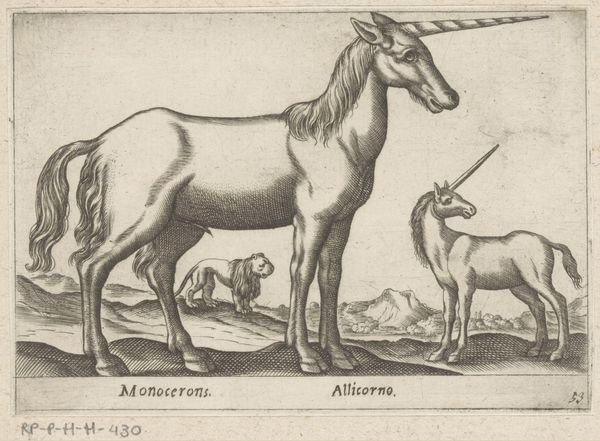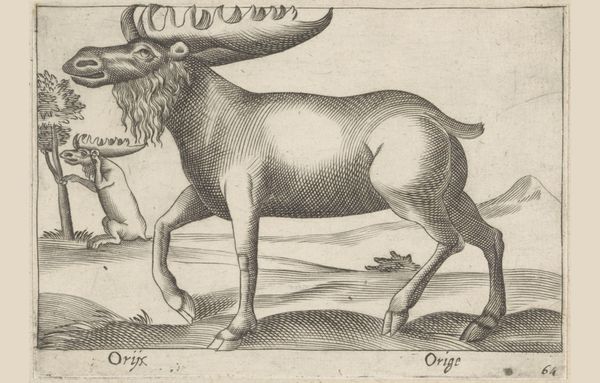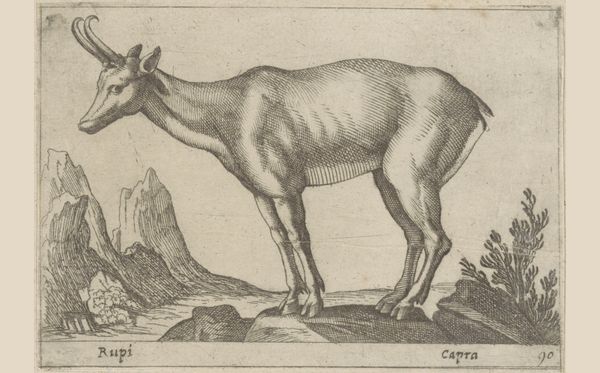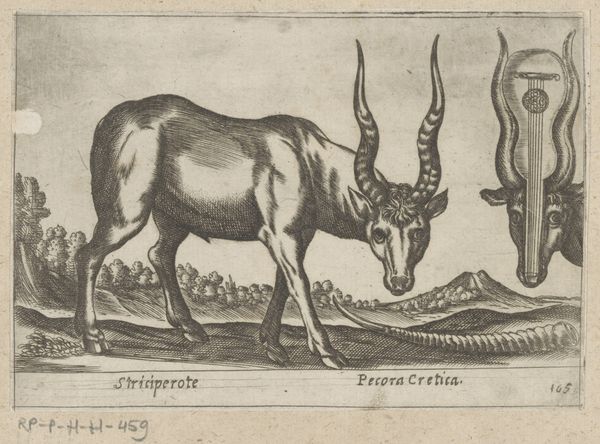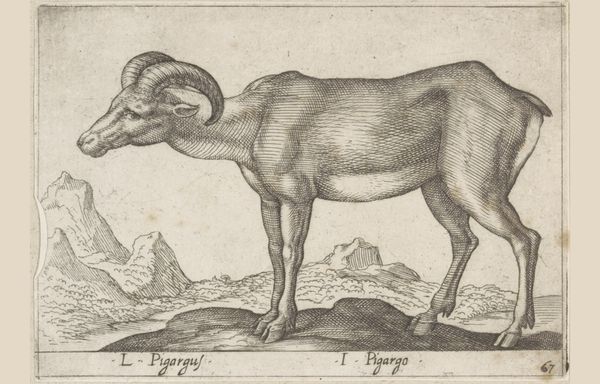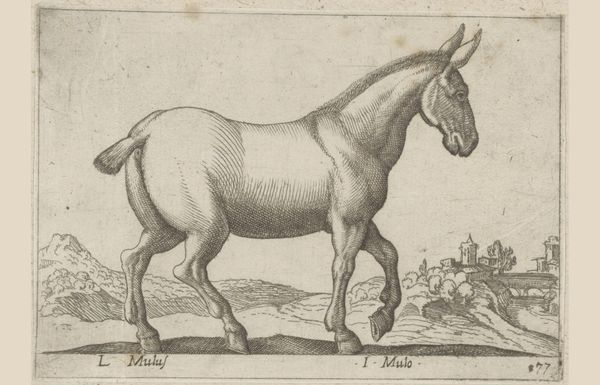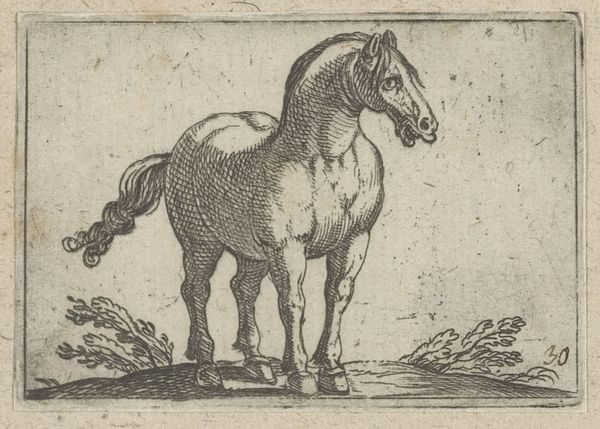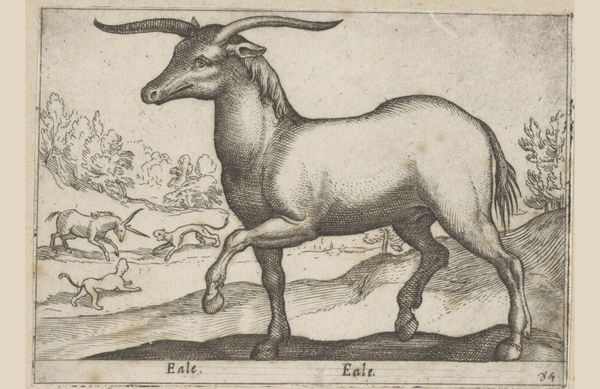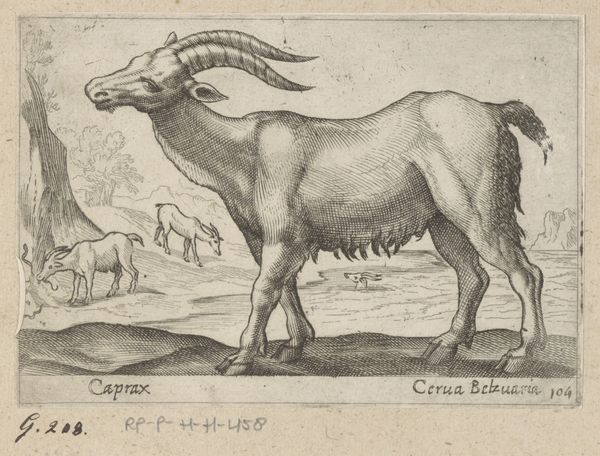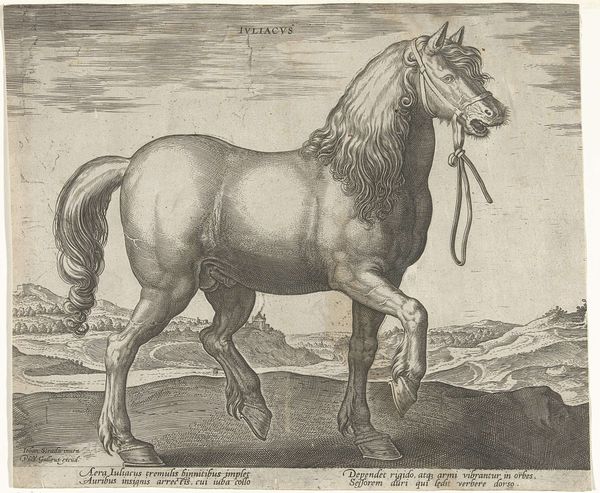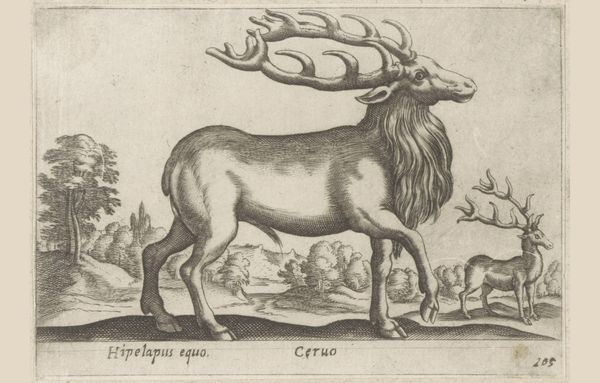
print, engraving
#
baroque
# print
#
landscape
#
figuration
#
history-painting
#
engraving
Dimensions: height 95 mm, width 137 mm
Copyright: Rijks Museum: Open Domain
Editor: So this engraving, "Geitachtige" or "Goat-like" by Antonio Tempesta, made before 1650, shows an animal resembling a large antelope with a very long, ridged horn, like some strange unicorn. It feels almost medieval in its depiction, a kind of merging of naturalism and fantasy. What can you tell me about it? Curator: Well, consider the period. This print exists within a moment where scientific inquiry and artistic imagination were heavily intertwined. The “Geitachtige” isn’t necessarily meant to be a zoological study. More accurately, it represents a particular moment of inquiry: what role did the exotic, and often misconstrued, animal play in shaping Europe's cultural consciousness? Editor: Cultural consciousness? Could you expand on that? Curator: Think about the function of imagery during the Baroque period. Prints like this one circulated widely, forming people’s understanding of the world. Even if most Europeans never saw such a creature, this image contributed to the formation of beliefs about far-off lands and their resources, like the possible medicinal uses for the animal's horn. What's in the background? Are those hunters? Editor: Yes, they appear to be hunting similar creatures. There is an action scene. Curator: Precisely! These hunting scenes highlight how the natural world, especially these exotic creatures, were being viewed through the lens of human domination. It brings up ideas around resource exploitation, trade, and even colonization, where capturing the image of the animal can be related to literally capturing and owning it in foreign lands. Editor: So the "accuracy" of the animal is less important than what it represents about that era’s worldview? Curator: Exactly. It tells us less about zoology and much more about the socio-political undercurrents influencing how the world was understood and visually represented. The very existence of the print is an active ingredient. Editor: I hadn’t thought about it that way – how images themselves are a kind of artifact of cultural attitudes. Curator: Absolutely. Examining this 'Geitachtige' gives a real insight into how visual representations of the animal kingdom play a political role and solidify certain societal frameworks.
Comments
No comments
Be the first to comment and join the conversation on the ultimate creative platform.
